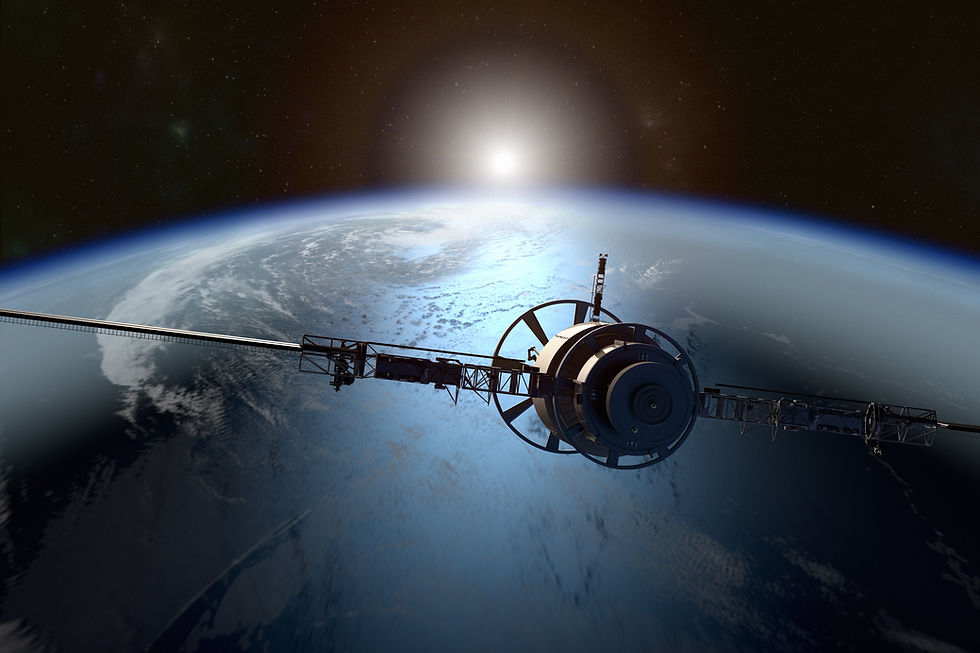Sentinel-4 Launch: Ushering a New Era in Air Quality Monitoring Across Europe
- sulevaivelina
- Jul 2
- 3 min read
The Copernicus program, Europe’s flagship Earth observation initiative, is set to revolutionize how we monitor air pollution with the upcoming launch of Sentinel-4 in summer 2025. This new satellite mission will provide hourly, high-resolution measurements of key air pollutants, helping to protect public health and the environment across all EU countries.

What Is Sentinel-4?
Sentinel-4 is the first European satellite dedicated specifically to geostationary air quality monitoring. Unlike previous satellites that orbit the Earth every 90 minutes, Sentinel-4 will stay fixed above Europe, delivering continuous, hourly updates on atmospheric gases such as:
Ozone (O₃)
Nitrogen dioxide (NO₂)
Formaldehyde (HCHO)
Sulphur dioxide (SO₂)
Glyoxal (CHOCHO)
This enables tracking the daily cycles of pollution and quickly identifying pollution spikes from urban areas, industry, or natural events like wildfires.
Sentinel-4’s UV-visible and near-infrared spectrometer onboard the Meteosat Third Generation Sounder satellite will give scientists, policymakers, and environmental agencies near real-time insights into Europe’s air quality.
Recent Findings: Monitoring Volatile Organic Compounds (VOCs) Like Formaldehyde and Glyoxal
Recent Copernicus satellite imagery has shown elevated levels of formaldehyde and glyoxal in parts of Eastern Europe. These volatile organic compounds (VOCs) are critical markers of pollution from both natural sources and human activities like traffic, agriculture, and industry.
Sentinel-4 will significantly improve the ability to monitor such pollutants continuously and with greater precision than ever before. This data is essential to understand pollution sources, forecast air quality, and implement effective pollution control policies.

How Sentinel-4 Fits into the Copernicus Family
Sentinel-4 complements other satellites in the Copernicus program:
Sentinel-1: Radar imaging satellites providing all-weather, day-and-night imagery for monitoring land use, natural disasters (floods, earthquakes), and maritime surveillance.
Sentinel-2: High-resolution optical imaging satellites that capture detailed images of land and coastal zones, helping with agriculture, forestry, and environmental monitoring.
Sentinel-3: Satellites measuring sea surface temperature, ocean color, and land surface temperature, crucial for climate monitoring, marine ecosystems, and environmental change.
Sentinel-5P (Precursor): Focused on atmospheric composition, Sentinel-5P maps trace gases like NO₂, ozone, methane, and aerosols, laying the groundwork for Sentinel-4’s more frequent and geostationary observations.
Together, these missions provide a comprehensive picture of Earth’s surface and atmosphere, supporting everything from climate research to disaster management and air quality monitoring.
How You Can Access and Use Sentinel Data
Copernicus makes satellite data freely available to everyone, from researchers and policy makers to entrepreneurs and the general public. Here’s how to get started:
Copernicus Open Access Hub (scihub.copernicus.eu): Access Sentinel-1, Sentinel-2, and Sentinel-3 data archives, with tools to search and download imagery.
Copernicus Data Space Ecosystem (dataspace.copernicus.eu): A one-stop platform to explore, visualize, and download data from all Sentinel missions, including atmospheric data.
Sentinel-5P and Sentinel-4 portals (sentinels.copernicus.eu): Specialized portals offering atmospheric composition data, visualizations, and tools.
Copernicus Atmosphere Monitoring Service (CAMS) (atmosphere.copernicus.eu): Real-time air quality forecasts and pollution maps, powered by satellite data.
To start using the data, simply create a free account on these platforms, explore tutorials and documentation, and download or stream the satellite products relevant to your interests.
Why Sentinel-4 Matters for Europe and Beyond
The launch of Sentinel-4 will enhance Europe’s ability to:
Detect and monitor air pollution hotspots hourly
Understand the daily behavior of pollutants and their sources
Improve health warnings and pollution forecasts for citizens
Support environmental policy and compliance with EU air quality standards
For more details, explore the Copernicus Sentinel-4 mission page and the Copernicus Atmosphere Monitoring Service.




Comments